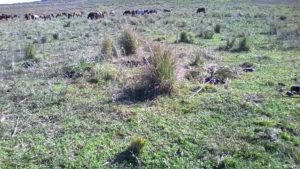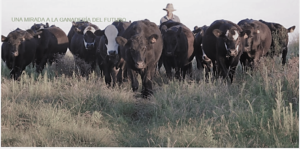By: Juan P. Alvez | Pasture Technical Coordinator
UVM Extension, Center for Sustainable Agriculture
Often times, we pass by horse farms and marvel at their idyllic views of green pastures and beautiful animals. But – unfortunately – far too often these pastures are grazed too low and overgrazed. Horses evolved following ruminant livestock. The absence of fencing allowed them to graze and move on to the next fresh pasture and only returning when forages were ready again.
As with any species of grazing animal, overgrazing results from letting animals re-graze the same plants for too long. This can create an array of problems that cost the farmer money and take a toll on soil and water quality, ranging from poor forage production, increased costs with feed purchases, persistent weeds, lower fertility, soil exposure, compaction and erosion. Because horses have teeth in both their upper and lower jaws, they can graze right down nearly to the ground – much shorter than other grazing animals leave their forage, and much shorter than is healthy for the plants in the pasture.
A ready solution is to subdivide the pasture divisions into smaller areas, and rotate animals through them. This enable forages in grazed paddocks to rest and grow to a proper grazing height, replenishing carbohydrates (sugar, energy) reserves while producing more forage that’s also of a higher quality. This also helps distribute the manure more evenly. Ideally, cool season pastures should not be grazed below four inches high, because doing so will demand longer recovery periods. If you are considering grazing mixed species, and are concerned about forage quantity, different animal species have different grazing preferences and forage overlap is hardly a problem in diverse pastures. Another great advantage of mixed species grazing is that, different animal species are affected by different parasites.
Horses also benefit from rougher pastures, and perennial forages –which cost nearly nothing to regrow and can provide the nutritious feed horses need to be healthy-, can be one of the greatest feeding resources to sustain them, avoiding non-structural carbohydrates’ present in the lower part of grasses. However, to tap into this great free resource, horse keepers must ensure that their pastures have enough quantity (dry matter) of diverse forages, in order to lower their feed and maintenance costs.
As in any grazing, it is important to identify the correct “stocking rate” (how many animals a given pasture will support) and plan the rotation. In order to know this, we have to know two additional things: 1) How much forage the specific animal (or group of animals) will need and, 2) How much forage is available throughout the grazing season. Check this step-by-step grazing math worksheet to help ensure that you always have enough forage of the best quality to supply to your animals. You can download these amazing grazing charts from our friend Troy Bishop, and posted by OnPasture.

Field after being grazed by cows and followed by horses. Horses can be seen afar. (Photo by: Juan Dutra)
Juan Dutra –a young and experienced grazier beef farmer from Northern Uruguay- says he successfully practices multi-species grazing, using horses as a second grazing group, right after cows have grazed each paddock. His interested in maximizing the absorption of solar energy and its transformation into products. For the most part, pastures in his farm were never plowed although when he bought the farm, pastures were severely overgrazed. Because of the characteristics of horse’s grazing, utilizing them to graze after the cows helps in many aspects such as, taking advantage of remaining plant species not grazed or undesirable to cows, grazing around areas of repugnance –usually where cow pats were deposited-, and opening up the canopy to allow for shaded species to have a chance. Dutra says he feeds his horses “nothing but left over grass!”
Take home message and other recommendations:
- Besides the normal permanent fencing, plan adding paddocks within with electric fencing;
- Electric tapes are a prefered option to polywire or high tensile to help horses visualize the fence.
- Consider rectangular paddock designs over other shapes (i.e. square), so that animals have a longer section to trot and exercise.
- Provide high quality water and move the stock water tank to the paddock where the horse is grazing.
- If possible, plan for shade and shelter for best comfort during warm or cold days.
- Horses make a perfect follow up grazers when mixed up with cows. They can graze low to medium quality forages and they also graze well around repugnance areas.
- Walk your pastures frequently and enjoy observing your horses grazing behavior and the status of each paddock.
For more information:
Please refer to our awesome equine grazing guide: “Seeking Balance: Elements of a Successful Horse Grazing System” or, contact Kimberly Hagen at: 802-656-3834 (kimberly.hagen(at)uvm.edu)



Recent Comments